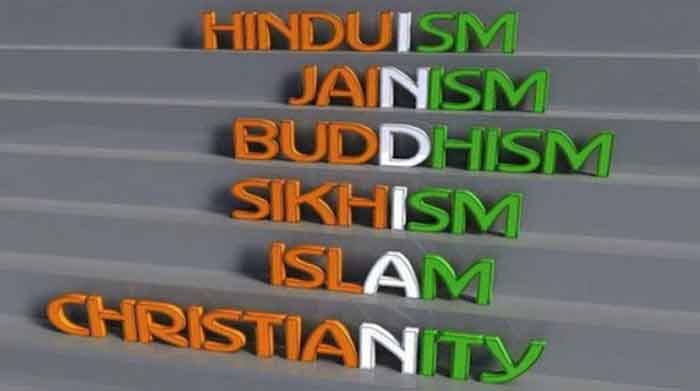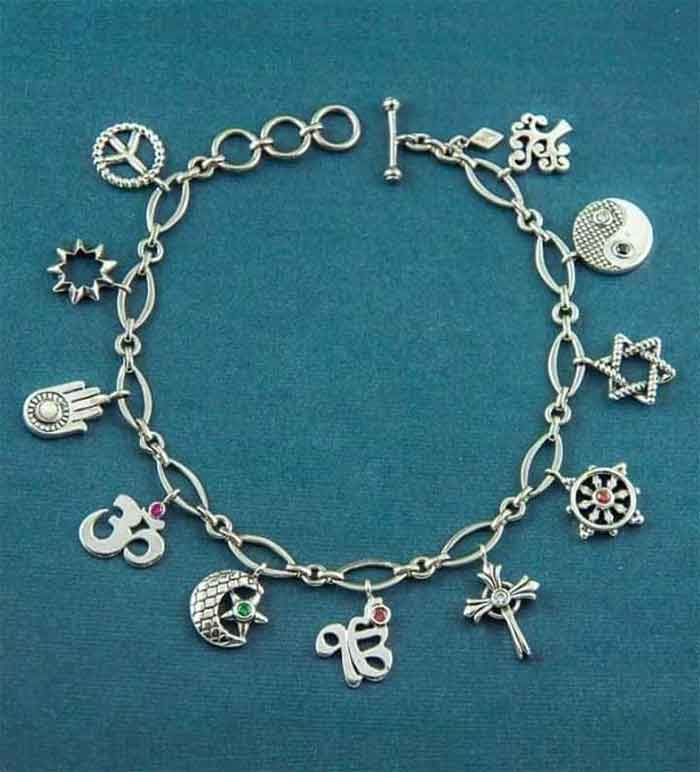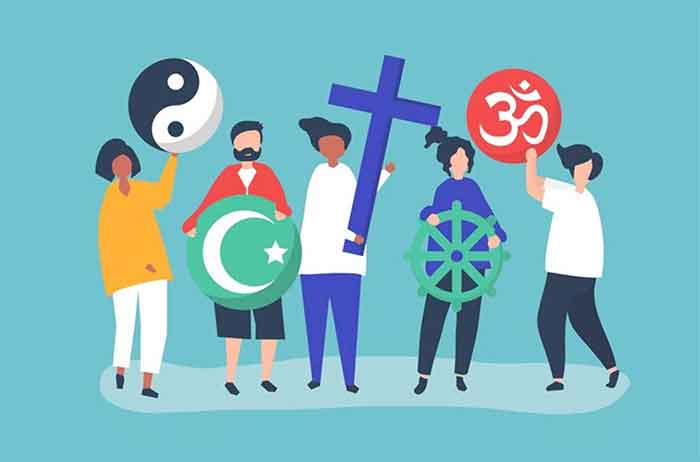
Vishwa Hindu Parishad General Secretary Milind Parande recently (Sept 2021, TOI) stated that “The very idea of Ganga Jamuni Tehjeeb (term used for confluence of Hindu and Muslim cultures in the country) is irrelevant, what exists is one culture, and the rest can simply merge into it. The Hindu cause has to be prime.” Many notions are being circulated that it is romanticized nostalgia propagated by the elite. It has no base in history. As such there were tensions in communities in history and according to some; Islamic conquest has been the story of bloodiest acts oppressing and massacring Hindus in particular. Many have also been citing temple destructions by Muslims kings, conversions and Jizia as the foremost examples of the atrocities of Hindus.
It is very true that the notion of Ganga Jamuni Tehzeeb has emerged in the nineteenth century onwards as a description of the earlier interaction and emergence of syncretic trends in the country. While India is one of the most diverse countries with nearly 4600 communities,(there is no racial purity due to thick social interaction at all the levels), with nearly 18 major languages and 700 dialects, 8 major religions and multiplicities in costumes and cuisines. It is living thriving culture created by the people from last several centuries. Dravidians, Aryans, Mongoloids, Semitics are the foundation of our ethnic diversity. Ancient Indo-Aryan and Medieval Indo-Muslim segments stand out as being the major influences on this civilization.
Indo-Aryan interaction contributed to the Vedic culture with its lasting influence and the Indo-Muslim interaction is what is popularly known as Ganga-Jamuni Tehjeeb. With the rise of sectarian nationalism and it’s narrow, selective presentation of the past; the kings are seen through the prism of religion, unmindful of the fact that most of the things being attributed to Muslim kings are just part of the truth. In the British introduced communal historiography, both Muslim and Hindu have glorified the kings of their religion and looked down upon the kings of ‘other religion’.
The atrocities attributed to Muslims kings, temple destruction and forcible conversion in particular are being equated to holocaust by communal forces. The war amongst kings irrespective of their religion did lead to killings, be it the Kalinga war in which Ashoka was one of the king, be it the Akbar-Rana Pratap and others of this type, the tragedy of ordinary peoples’ death in wars was the price paid for kings’ ambitions of expanding their rules.
Interestingly history, objective and scientific one, tells us that Hindu kings’ assaults in the name of Dharmyudh, Muslim kings battles in name of Jihad and Christian kings doing crusade fall in the same category of empire expansion. In this narrative while Aurangzeb and odd other Muslim king will be cited to have killed his relative for the sake of power, the killing of his cousins by Ashoka for power or the very recent, comparatively, killing his brothers’ family by King Gyanendra will be underplayed.
While kings had the lust for power and wealth, the popularized versions of history relates it to religion alone. It is due to this that destruction of Kashi Vishwanth by Aurangzeb is presented as persecution of Hindus, while hiding the fact that same Aurangzeb gave many donations to many temples some of which are Lord Krishna in Vrindavan, Mahankaal in Ujjain and Kamakhya Devi near Guwahati. The fact that he destroyed a mosque in Golconda for sake of wealth is also generally hidden under the carpet. One can go on and on this.
The misconception that Islam was spread by sword is another major reason cited to exemplify the persecution of Hindus. The major reason for conversion to Islam was social interaction and longing to escape the Varna-Caste atrocities on the castes low on hierarchy, and those who were untouchables in particular.
This propagation that Ganga Jamuni tehzeeb is a myth is being spread parallel to the social and political hegemony of sectarian nationalism. This narration whitewashes the presence of Hindu officials in Muslim courts, Todarmal, Birbal with Akbar, whose commander in Chief was Raja Mansingh. It projects Rana Pratap as great Hindu nationalists and hides the fact that his army had large number of Pathan soldiers and Hakim Khan Sur was one of his generals. This can be described ad infinitum about most of the Muslim and Hindu kings.
Indo Muslim interaction at all levels of social life are scattered throughout. In Mumbai there are two Dargahs, Haji Ali and Haji Malang. The plaque at Haji Ali says, ‘Sant Ma Hajiani’, ‘Ma Hajiani ki Dargah’. This is frequented by large number of Hindu and Muslims both. The Haji Malang Dargah has Pandit Vishnu Ketkar as the Chief priest (Mujawar). Similarly Hindu Bhakti saints like Kabir had large number of Muslim followers.
The interaction of Persian and Hindi (Avadhi in particular) led to emergence of Urdu; a unique Indian language in which starting from Chandrabhan Brahman down to likes of Munshi Premchand contributed to its richness. Many Mughal emperors drew Sanskrit scholars to their Courts. Dara Shukoh in his own way lived and talked of Ganga Jamuni Tehzeeb when he wrote the book ‘Majma-Ul Baharayn’, comparing India to the great ocean comprised by two seas, Hinduism and Islam. The Persian cuisine like Biryani and sweets like Jalebi became part of our plate and continue to stimulate our palette.
The cross celebration of festivals Holi in Sufi saints Daragahs, and Divali in the emperors Courts as ‘Jashn-e-Charagan’ (Festival of lamps) was the norm. Hindus participated in the Moharrum with zeal while Muslims shared the joys of Hindu festivals.
Even down South in Adilshahi kingdom, Ibrhamim the Second compiled a book, Kitab-E_Naurang with 59 poems; the first one of these is invocation of Goddess Saraswati. Similarly in literature the likes of Rahim and Raskhan contributed to literature in praise of Lord Krishna. And not too long ago likes of Ustad Bismillah Khan played Shehnai dedicated to Hindu gods and Goddesses.
These are just a little sampler of the richness of interactions. The sectarian culture with its political ascendance cannot have any of it. For them as VHP General Secretary is asserting all have to merge in to Hindu culture as defined by them and so the questioning of Ganga Jumna Tehzeeb, something which is the integral part of our culture and tradition.
















































